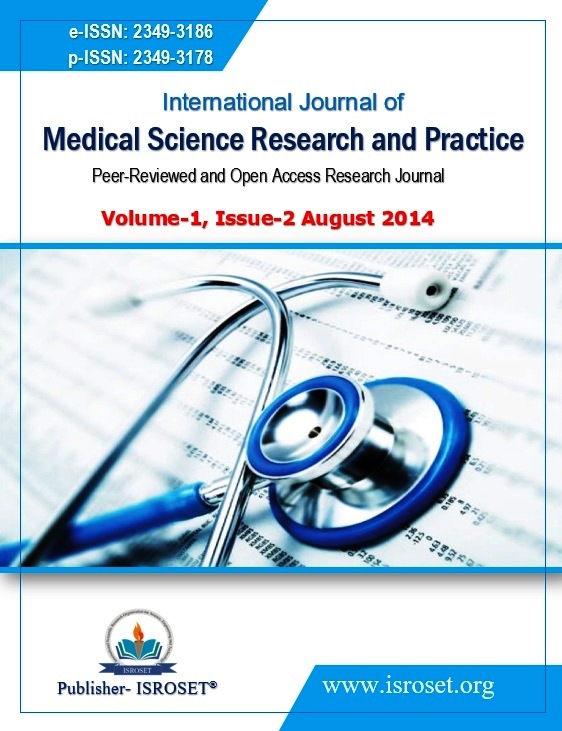Problem Based Learning: What and Why
Keywords:
Basic Science Curriculum, Medical Education, Problem Based LearningAbstract
The goal of Medical Education is to produce qualified Physician. Though we are using different method to train undergraduate students, but Problem based learning (PBL) is an innovative teaching learning method that impart knowledge, enhance intrinsic motivation , promote self learning, encourage clinical reasoning and also encourage them to work in a team. Activation of prior knowledge, encoding specificity and elaboration of knowledge are three principles of acquiring new information. These principles have been included in to the seven jump theory. In conclusion, the PBL is student centered self motivational, active and a challenging method of teaching and learning both for faculties as well as students.
References
Anderson J, Graham A. A Problem in Medical Education; Is there an information overload ? Medical Education; 1980; 14: 4-7.
Office of Research in Medical Education, University of Illinois - College of Medicine- Report to the faculty; Chicago; Illinois 1964.
Schmidt HG. Problem based learning; Rational and Description, Medical Education; 1983; 17:11-16.
Bhattacharya N, Shankar N, Khaliq F, Rajesh CS, Tandon OP. Introducing problem based learning in physiology in the conventional Indian medical curriculum. Natl Med J India. 2005;18:92–95.
Pandya H, Ghosh S. Sensitizing faculty to the problem oriented approach as an instructional method: Experience of a brief faculty development workshop. Natl Med J India. 2008; 21: 243-5.
Medical council of India. Salient features of regulations on graduate medical education. Gazette of India. 1997; 3(4).
Neufeld VR, Barrows HS. The "McMaster Philosophy": an approach to medical education. J Med Educ 1974; 49(11): 1040–1050.
Neufeld VR, Norman GR, Feightner JW, Barrows HS. Clinical problemsolving by medical students: a crosssectional and longitudinal analysis. Med Educ 1981; 15: 315–322.
Barrwos HS, Tamblyn RM. Problem Based Learning; An Approach to Medical Education; Springer; New York 1980.
Dutch B, Gron S, Allen D. The Power of Problem Based Learning eds 2001;Stylus Publishing.
Joans HS, Etsel SI, Fisel SI, Barzansky B. Undergraduate Medical Education JAMA 1989; 262:1011-1019.
Wood DF. ABC of Learning and Teaching in Medicine: Problem Based Learning. British Medical Journal 2003; 326: 328-330.
Gonnella JS, Goran MJ, Williamson JW, Cotsonas NJ., Jr Evaluation of patient care. An approach. JAMA 1970; 214: 2040–2043.
Chapagain ML, Bhattacharya N, Jain BK, Kaini KR, Koirala S, Jayawickramarajah PT. Introducing problem based learning in to an organ system programme. Medical Teacher; 1998; 20: 6; Short communication.
Joshi MP. ed Problem- oriented Training on Rational Therapeutics, Kathmandu, Medical Education Department TU, IOM. 1990.
De Goeij AFPM. Problem Based Learning: what is it? What is it not? What about the Basic Sciences? Biochemical Society Transactions 1997; 25: 288-293.
Wijnen W. Problem Based Learning: Perspectives from the Maastricht Experience (Van der Vluten C, WignanW. edn. Thesis Publishers Amstradam.1990: 1- 7.
Jayawickramarajah PT. Problem Based Curriculum Chapter 2. Reprinted from Adhikari RK, Jayawickramarajah PT. (Eds)”Essentials of Medical Education” Health learning material centre (A WHO Collaborating Centre) Institute of Medicine, Tribhuvan University, Kathmandu, Nepal, 1996.
Downloads
Published
How to Cite
Issue
Section
License

This work is licensed under a Creative Commons Attribution 4.0 International License.
Authors contributing to this journal agree to publish their articles under the Creative Commons Attribution 4.0 International License, allowing third parties to share their work (copy, distribute, transmit) and to adapt it, under the condition that the authors are given credit and that in the event of reuse or distribution, the terms of this license are made clear.






